The Curious Case of Zach Keene
Zach Keene was fired and the parents insisted he stay. What happened next might surprise you.
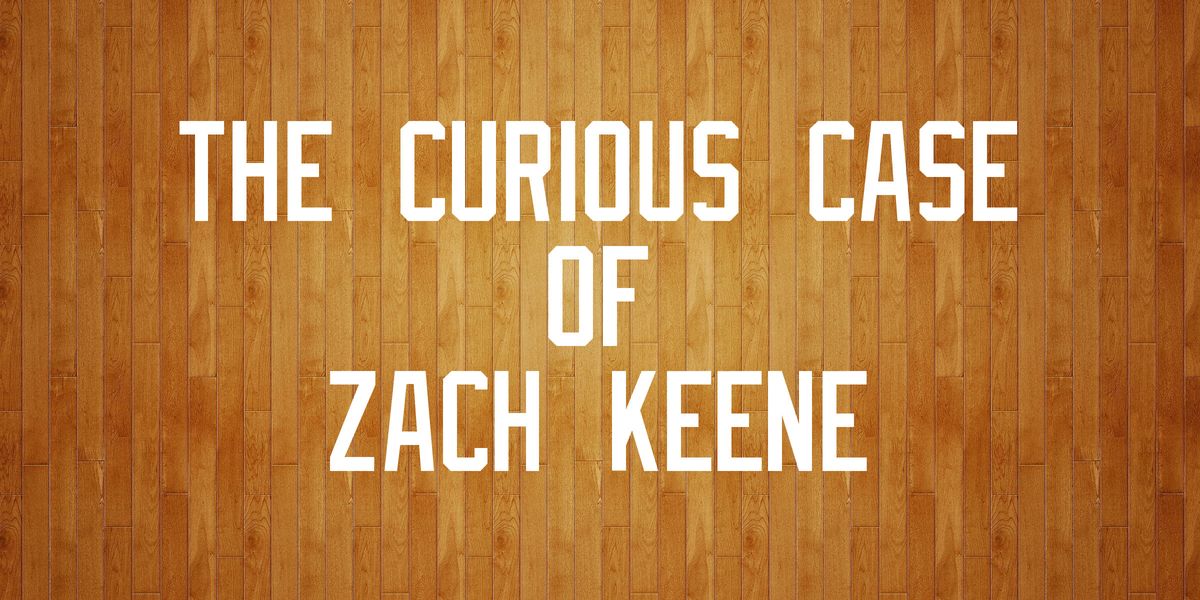
The story has become a cliche: a new coach is hired to great expectations, but after a couple of seasons, the parents get restless. Susie isn’t getting enough playing time. Uncle Jim saw something during the Celtics game and has ideas about strategy. A couple of close games go the wrong way and suddenly the parents want a new coach.
But what if the parents weren’t the issue? What if a coach got fired and the parents insisted he stay?
Such is the case at Spruce Mountain, where girls basketball coach Zach Keene was fired and the parents immediately mobilized, demanding he be reinstated. They organized via a Facebook page and showed up en masse at a meeting, forcing the AD to come back early from his planned vacation. Sophomore guard Auriana Armandi told the Sun Journal she wouldn’t feel comfortable playing for a different coach. It was a surprising (and refreshing) change in a state that’s become accustomed to helicopter parents running the show.
The response was so overwhelming that a mere 12 days later, the administration at Spruce Mountain reversed course, bypassed a proposed 2-game suspension, and fully reinstated Keene. The firing was shocking, but the reversal even more so. What could possibly have changed in only 12 days? In an effort to get a handle on this, I spoke to dozens of people around the state to get a full picture of what happened, how Keene got fired in the first place, and what led to his reinstallation. I was planning to write a couple hundred words on why it’s dumb to fire your coach after three seasons and, well, you’ll see why this is a little longer.
Keene just finished his third season at the helm for the Phoenix, compiling a 24-33 record and reaching the postseason twice–a far cry from the Spruce Mountain teams of a couple years ago that posted 3 consecutive 18-0 regular seasons under Gavin Kane and Chris Bessey. The easy assumption is that Keene was fired for his Win-Loss record, but that doesn’t seem to be the case here. They went 7-11 and finished 11th in Bessey’s final season, indicating a talent wave (headlined by 1,000 point scorer Alexis Bessey) had graduated. They were 7th in our preseason fan poll the last two seasons, and while that’s not the best indicator of a team’s true talent level, it tends to give you a pretty rough idea. The Model, which in contrast to the fan poll is a reliable indicator, pegged them as the 10th best team in B South last year, so you could easily make the argument that they exceeded their talent level in finishing 8th, even though they lost their home prelim game to Maranacook. This isn’t a team with elite talent that let everyone down. This is a team that achieved what they should have achieved. Numerous studies have shown that changing the coach in these situations tends to not help. So why was Keene fired?
In Randy Whitehouse’s excellent article for the Sun Journal on the community response to the news, he details a couple of reasons given to Keene for his firing (reasons the administration has declined to comment on). They include: “holding a practice on a snow day during the season, his sideline conduct, dwindling numbers in the basketball program, acquiring his required CPR certification late and allowing his team to wear warm-up shirts that displayed a company logo, which he said he was told was not allowed by the Maine Principals’ Association.”
I was able to acquire an email sent by Interim Superintendent Robert Webster to a third party claiming that state law “gags” administrators from disclosing employees’ personnel records. The law he seems to be citing here is Title 20-A: §6051, which essentially treats as confidential any employment records beyond basic information like their role at the school, degrees earned, things like that. However, the very next law allows employees to review those files. So they’re only as confidential as Keene wants them to be.
Zach Keene politely declined multiple interview requests for this story.
Let’s work under the assumption that the reasons reported by the Sun Journal are genuine and go though them, starting with the last one
Allowing his team to wear warm-up shirts that displayed a company logo.
Keene alleges he was told this was a violation of MPA rules. The MPA is not amazing at transparency, but they do publish a fairly comprehensive set of rules, which you can easily download from their website. Neither the 44-page MPA Handbook or the 73-page Coaches’ Handbook says anything about logos on warm-up shirts. In fact, the word “logo” does not appear in either document. I asked multiple Athletic Directors if they had heard of this rule. None had. So I went directly to the source, asking the MPA to confirm specifically whether or not such a rule exists. Executive Director Dick Durost promptly refused, saying, “We will not comment on any hiring decisions by MPA member schools nor will we provide comments on any interpretations of policies that may or may not have been made by a school. Any questions you have should be directed to the school.“
So I directed my questions about the MPA rules to several members of the RSU 73 administration and staff. Those that would speak to me were equally confused by the rule, as they do not work for the MPA.
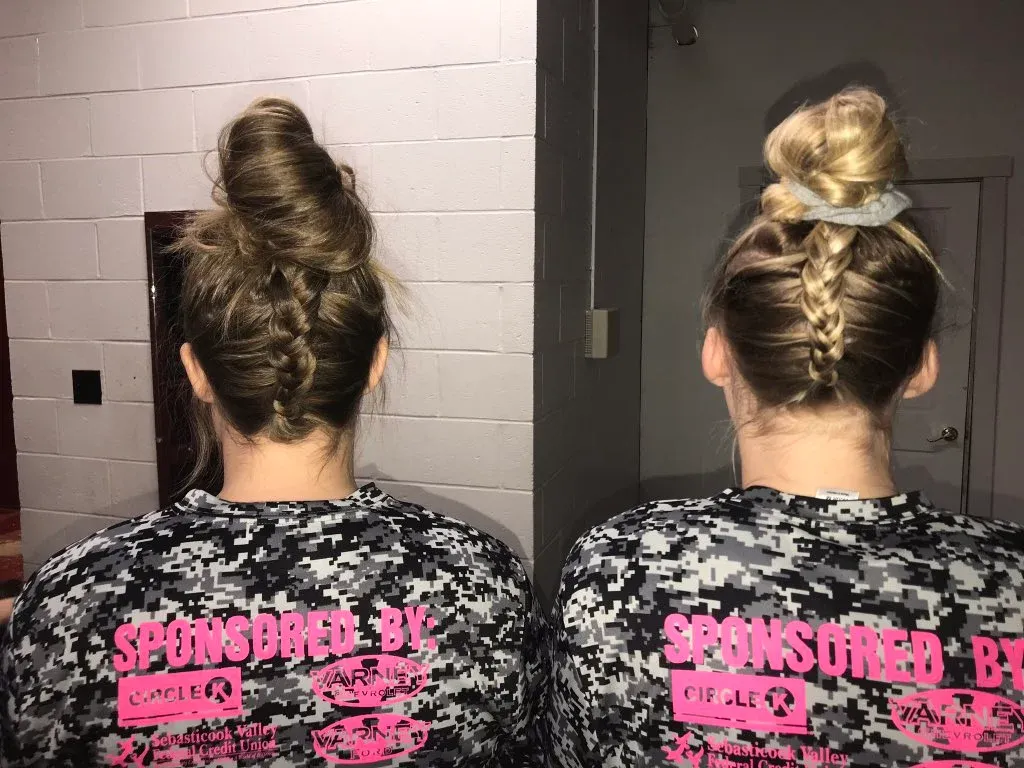
But there is a precedent here. The Nokomis girls basketball team wears warmup shirts with no fewer than 10 logos of local business sponsors. They wore them in their 2018 quarterfinal loss to Skowhegan, in full view of dozens of MPA officials and continued to wear them for this past season. According to senior Maci Leali, no one at the MPA said anything. So if this is an MPA rule (and there’s not a single reason to think it is), it is clearly not enforced.
I think it’s pretty safe to say that this rule does not exist.
Dwindling numbers in the basketball program
The youth program is the lifeblood of any high school program. Want to know why schools like Hampden and Greely seem to be constantly re-loading? It’s the youth program. But building a youth program isn’t an overnight thing. It takes time to grow excitement among 4th graders who have plenty of other options for their free time.
Youth participation is closely tied to median household income, and in the income brackets that most closely represent Jay and Livermore Falls, youth participation dropped nationally over 9% from 2016 to 2017, the last year for which I found data. In 2017, 44.6% of kids in Spruce Mountain’s median household demographic bracket played youth sports. The next bracket up? 56.6%. RSU 73 is also bleeding students. At the time of Keene’s hiring, the “PK – 12” student population was 1,082, after taking out the high schoolers. In just 2 years, that same number has dropped to 1,050, according to the minutes of the school board’s bi-monthly meetings. The reason cited by the school board in those minutes? People moving away.
I asked Spruce Mountain Athletic Director Marc Keller how much of a drop the youth program had seen under Keene’s watch, but he would not answer. In a perfect world, you’d expect youth sports participation for RSU 73 to drop by at least 55 students over the course of the last three years and by significantly more if the overall income trend continued at anything close to the projected levels. But is the decline in participation also influenced by changes in the community?
I spoke to Zach Keene’s predecessor, Chris Bessey, about the state of the youth program and the charge that it had suffered under Keene, a claim he called “unfair and ridiculous.”
“The youth program is still pretty strong, I would say same as it has been for a long time…The move to the KVAC was not a good one for Spruce, became one of the smaller schools in the conference and I think it discouraged some kids from playing. All sports at Spruce, regardless of gender are seeing low numbers.”
Spruce Mountain was in the KVAC for only 3 years. They left the MVC full of bravado. Board Member Clint Brooks claimed the tougher competition would be “better in the long run.” They didn’t last that long, returning to the MVC in 2017, citing a change in status: “enrollment here has gone from 560 when we made the move to 408,” former Athletic Director James Black (who was not the AD for the initial move) told the Sun Journal at the time of their return. According to Bessey, most of the coaches at Spruce Mountain saw the “change in status” coming prior to the move, which cost the school $4K to $5K a year in travel alone. That’s a significant expense for a dalliance. The drop in enrollment seems to have leveled out, but it’s not hard to imagine the sort of ripple effect that would have on the youth program. Leaving a conference with all your traditional rivals means fewer people are going to your games, which means less overall community excitement, which leads to less interest from 4th graders who have better things to do.
I think it’s safe to say that these factors are outside of Keene’s control.
Holding a practice on a snow day during the season
There is no MPA rule concerning this. The MPA does make a distinction that any practices held on Sunday are at the discretion of the school district. This was not a Sunday practice and was clearly a practice held during the season. According to the Sun Journal, the practice was optional and not held on school grounds.
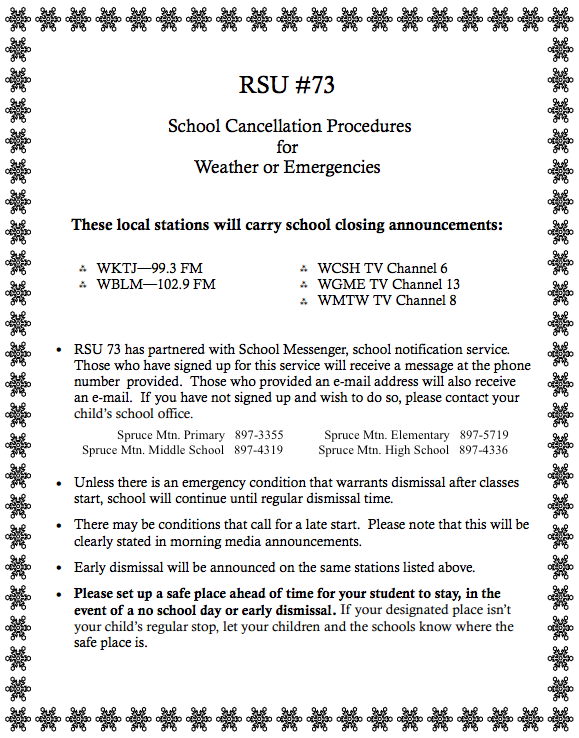
More importantly, there is no written Spruce Mountain policy against this. The Spruce Mountain coaches’ handbook, which at the beginning of this investigation was unavailable to the public, does not contain a single word about practices being held on or off school grounds. RSU 73 has an extensive list of policies on their website (as required by state law), including such things as their transgender policy and policy on medical marijuana, but there is no policy there about snow days. The only publicly available mention of a snow day policy on the district website is the “Storm Cancellation Procedures.” As you can see in the image attached, there’s nothing concerning after school activities on a snow day.
According to emails obtained by Maine Basketball Rankings, Athletic Director Marc Keller told a parent that “you will not find [the policy] in the handbook.” I’ve since learned from multiple sources that the reason you will not find it in the handbook is because it does not exist. In fact, it has never existed. The image attached is the extent of their snow day policy. This is not an issue limited to Spruce Mountain. Fellow MVC member Hall-Dale’s snow day policy is more expansive, but has a similar limitation.
Just like the warm-up shirt, this is a rule that does not exist.
Sideline conduct
According to sources, Keene was assessed 3 technicals last season and 1 the previous year for 4 in 38 games. NBA coaches, on average, are assessed 5.4 technicals per 100 games, so Keene is getting a lot of technicals (10.5 per 100 games), but roughly in line with the upper limits of a NBA coach (if you’re wondering, Draymond Green has a rate of 21.8 technicals over the last 3 seasons).
The MPA compiles a database of all technical fouls given out during a season, maintained by Commissioner Peter Webb. My attempt to confirm Keene’s technical history and how it compares to the rest of the coaches in the state of Maine from Commissioner Webb was ignored, but I have learned from other sources that one of his technicals was for being outside the coaches’ box.
Keene is active on the sidelines (you can watch for yourself) and in talking to referees off the record, you get the distinct impression that his interactions with the zebras could use some work. But, as Kalle Oakes wrote in the Sun Journal, that’s something on which an Athletic Director would work with someone over the course of 3 seasons. Rapport with officials is the sort of thing a coach has to learn on the job and this is Keene’s first experience as the lead coach on a bench. He was an assistant under Chris Bessey, but had no previous experience as a JV or Freshman coach before being hired. There’s a big difference between being an assistant and being the person responsible for interacting with the refs.
I reached out to several coaches who coached against Keene this season. They couldn’t be more complimentary of his sideline conduct. Monmouth’s Ricky Larrabee told me that “He has very good courtside conduct. His players love him, the parents want him to coach their daughters, and the community supports him. Those are all important things you’re looking for with a coach that’s trying to build a program.” Winthrop’s Joe Burnham describes Keene as “intense and intelligent. He is always very thoughtful in his actions, thoughts and words.”
Burnham’s team was the beneficiary of one of Keene’s 3 technicals this year. He describes it as a coach defending a player:
One of his players had just been given a technical, for something that doesn’t usually warrant one. Zach, knowing this is not in her character, started to argue on her behalf and in her defense. He obviously went further than the official thought he should, and he was given the technical. After he was given the T, he said no other words. He had accomplished what he set out to do, protect his player.
No wonder the players like him.
CPR Certification
The Sun Journal story reports that Keene’s CPR certification lapsed during the off-season and was resolved on December 16th. By that point, Spruce Mountain was 2-1 with a 17-point win against Mount Abram and a dramatic buzzer-beater over Dirigo. On the 17th, they moved to 3-1 with a win over Richmond. Multiple attempts to verify the date Keene got his certification renewed were rebuffed, with the school claiming that his certification, normally a public document, had been moved to his confidential personnel file, effectively confirming the certification was a factor in his firing.
In the public forum on April 1st, Keene observed that “if that’s fireable, I shouldn’t have been coaching up to that point to begin with.” The MPA’s rules clearly state that if a coach isn’t current on his or her certification, they are not eligible to coach. From the coaching eligibility section of the MPA Coaching Handbook (page 48):

CPR is Component F under Coaches’ Eligibility, which reads: “Every coach must have successfully completed a basic CPR/AED program and must maintain/ carry a current CPR-AED card.” Keene did not have a current CPR-AED card and had been coaching for longer than 12 months. But, as you can see in the highlighted section above, that’s not his responsibility. The MPA rules are very clear on this point. Ensuring Keene is eligible to coach falls to Spruce Mountain Principal T.J. Plourde or his designee, presumably AD and Assistant Principal Marc Keller.
Because Keene’s CPR certification is now in his confidential personnel file, the administration of Spruce Mountain is legally prohibited from discussing it, but Keene is not. He can access his personnel file and release whatever information he wants, which he effectively did in the public forum on April 1st.
Interim Superintendent Robert Webster was able to tell me via email on April 11th that “administrators made a good faith effort to make sure the coach knew the deadline,” but the onus still falls on those administrators. That is quite literally their job. I’ve since learned that Keene was notified in writing that his CPR had lapsed on November 14th, 2018. Spruce Mountain offered a CPR course, but it was cancelled because of inclement weather and rescheduled. The season, of course, started on December 7th.
Keene could have been more proactive in finding another CPR course (the Red Cross offers them), but officially the weight of responsibility falls on the administration.
Spruce Mountain
The minute the news of the firing broke, it was followed by a chorus of “again?” The frustration was echoed on Facebook, with multiple parents complaining that the district had run another good coach out of town. It wasn’t hard to find frustrated parents willing to discuss the situation off the record. The administration ran their football coach (Keene’s Father-in-Law) out of town. They tried to fire Principal T.J. Plourde and then when that backfired, it forced the resignation of Superintendent Todd LeRoy. Plourde is still the Principal.
They tried to fire Plourde. They tried to fire Keene. They tried to join the KVAC. Maybe there’s a pattern?
The amount of turnover at the district is staggering. Since the merger in 2011, Keene is the 3rd girls’ basketball coach. Keller is the 4th Athletic Director. They’re looking for a new Superintendent. Normally, if an organization has a habit of pushing people out, there’s someone with power who’s doing most of the pushing, but that isn’t the case here. In 8 years they’ve replaced everyone and the issues remain. Maybe it’s in the water?
What you’re left with is a situation where a young coach was fired after his 3rd season for 1) breaking an MPA rule that doesn’t exist, 2) breaking a district rule that doesn’t exist, 3) a drop in the youth program that didn’t happen, 4) getting a couple of minor technicals, and 5) something that by rule isn’t his responsibility.
Basically, they lied to him.
Then, when the community protested, they tried to reinstate him with a 2 game suspension. And when the community protested that, they re-hired him with nothing more than an agreement of how to move forward. It begs the question: Why? What did the administration hope to gain by all of this? What could possibly be the motive? Did he not win enough games? Did he not wear the right color tie? Did he not kiss the ring?
What’s crazy about this whole situation is that they could have just fired him. Brought him into a room and said, “Zach, we’re going in another direction.” They don’t have to give a reason. The courts have ruled that even the most tenured coach is nothing more than a temporary employee. What keeps coaches employed is one of two things: either their boss thinks they’re doing a good job or they don’t want to deal with the public blowback of firing them. This seems like the second category.
But they gave Keene a reason. And there’s nothing in there that justifies a firing. If there were, the administration wouldn’t have folded so quickly.
As Webster wrote to me concerning the CPR certification, “Draw your own conclusions.”
It gnawed at me, this voice in the back of my head, “something isn’t right.” I knew that Zach Keene hadn’t been fired for anything close to a justifiable reasons. I could have published that, but the voice told me to keep digging. Something didn’t add up. So I kept digging. Even after Keene was re-hired, I kept digging.
After researching the basics of this story and figuring out what had and hadn’t happened, I submitted a list of questions to Athletic Director Marc Keller asking for clarification of specific information. How many technicals did Keene get? What was the actual drop in numbers for the youth program? When did Keene’s CPR certification lapse? When was the MPA informed about CPR issue? Things like that. I sent a similar request to Interim Superintendent Robert Webster. On April 10th, Keene was reinstated. On the 11th, Keller wrote me this letter co-written and signed by Keene, which I received in the mail.
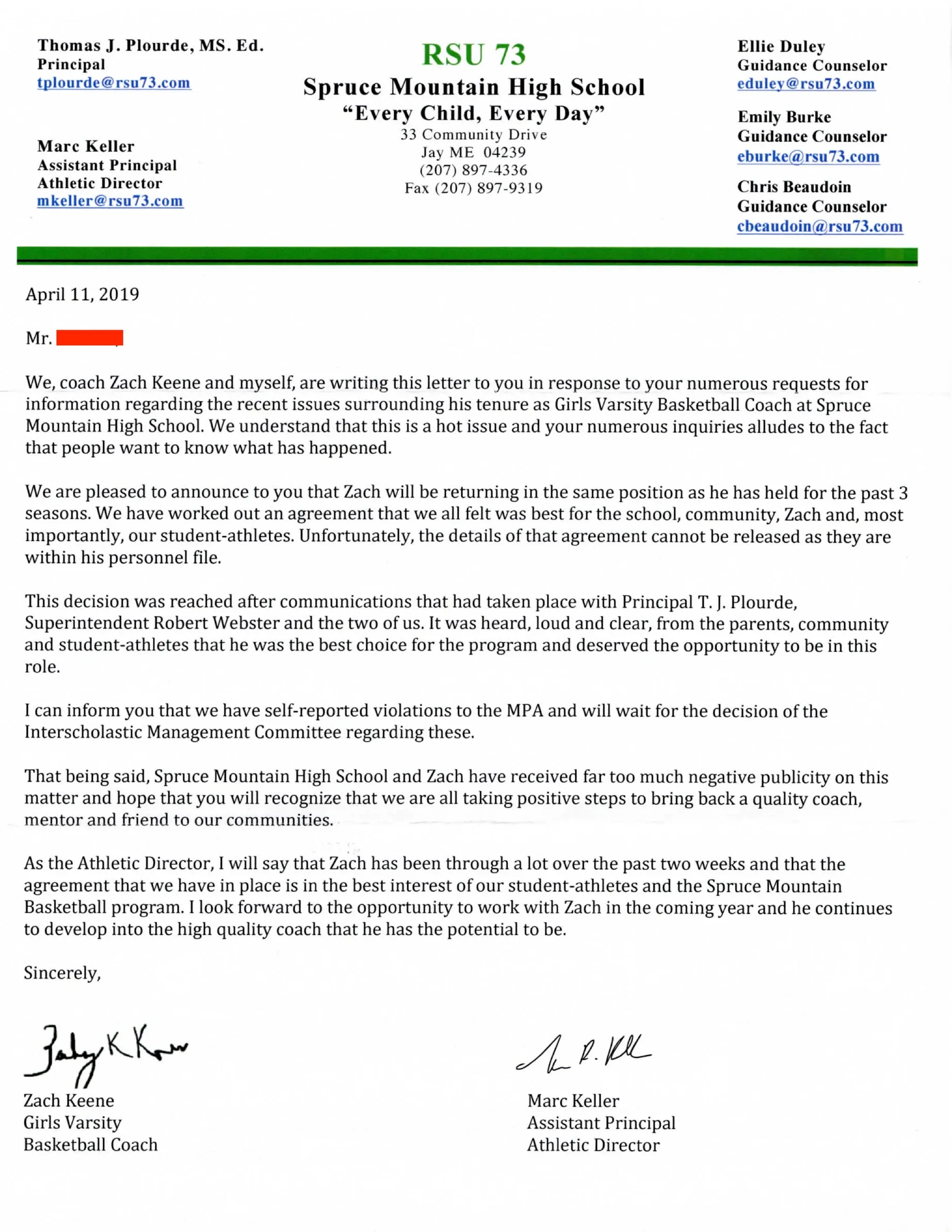
This is a rather ham-fisted attempt to get me to stop asking questions. The key piece of information here is Keller’s assertion that the CPR violation had been self-reported to the MPA and the Interscholastic Management Committee. Except, when I spoke to someone in the IMC on the 17th, they didn’t seem to know anything about it.
The Interscholastic Management Committee, or IMC, is the group in charge of maintaining the MPA’s rules. They determine eligibility and handle violations. They are the judge and jury.
If you remember that first parent meeting, Keene said that if the CPR certification was a fireable offense, then he shouldn’t have been coaching. He’s right about the second part. By not having current CPR certification and having been a coach for longer than 12 months, he was ineligible to coach an MPA member school. There’s a rule for this. From the MPA’s handbook:
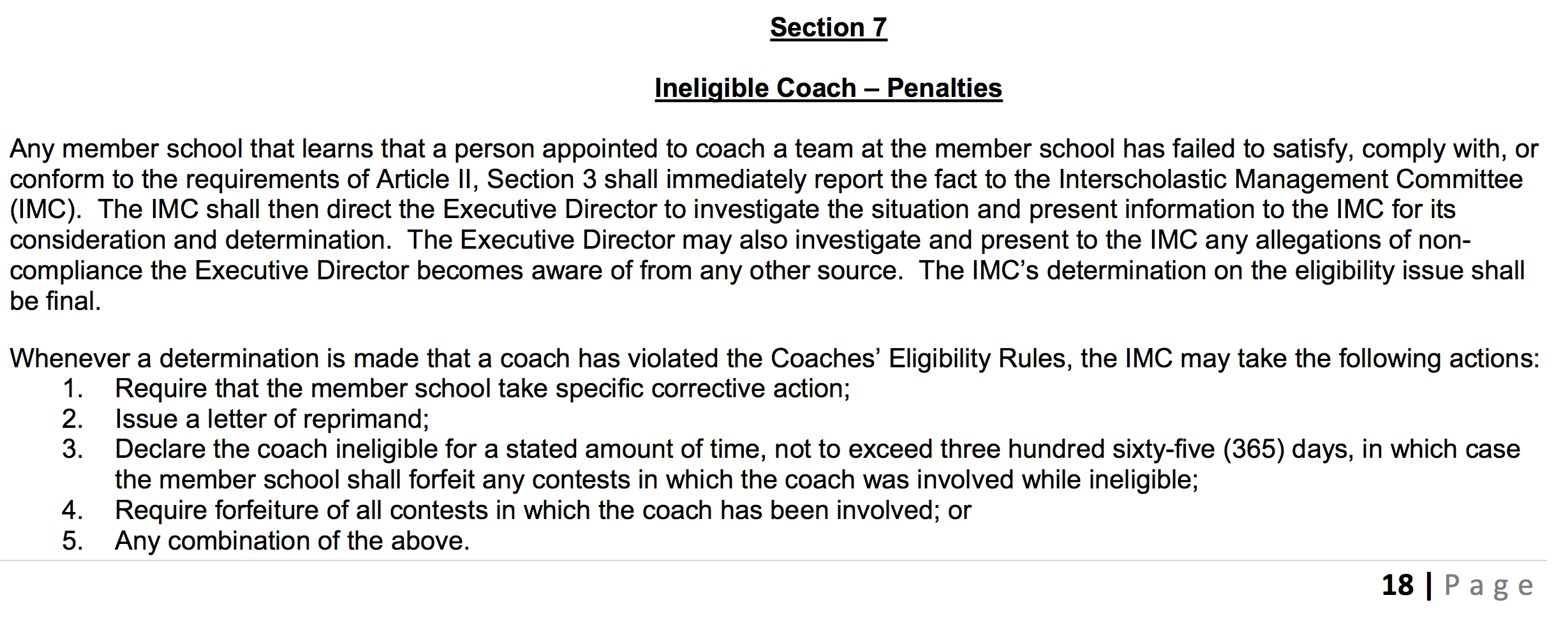
The rule clearly states that the school is required to report an eligibility issue “immediately” and the reasons for that become obvious when you get to the 4th potential action.
According to a former IMC member, when a school self-reports a violation and follows the protocol, the IMC generally lets the school police themselves. But if they don’t, if there’s a clear attempt to evade the rules or a lack of “institutional control“, then they take punitive action. Basically, mistakes happen, but if you don’t have your house in order, then they drop the hammer.
On April 11th, Keller assured me in that letter that Spruce Mountain had self-reported the issue and was awaiting the IMC’s decision. On the same day, Webster told me the same via email. The IMC had met twice since the infraction, most recently on March 25th when they made a recommendation for where to place the Class C and D enrollment line. Surely they would have done something about it in either or those two meetings. Previous incidents had been handled quickly and this was a clear-cut situation. If this had been reported immediately, Webster would have gotten resolution by now.
On the advice of a journalist friend, I submitted a request for Spruce Mountain’s self-reporting under the Freedom of Access Act (FOAA). That was ignored. So I consulted with the Public Ombudsman at the Attorney General’s Office and forwarded her response to Robert Webster. Within hours, I had a copy of the document and later learned that Marc Keller had reported the violation on April 14th, 3 days after his letter to me and nearly 4 months after the violation took place. Four months is no one’s idea of “immediately”.

It’s hard to imagine this would have ever been reported, had no one asked. But you can draw your own conclusions.
“Lack of institutional control” is a phrase you mostly hear from the NCAA. One of the tenets the NCAA uses to determine this is whether or not the school displayed “swift action upon learning of a violation.“
It’s hard to say what the MPA will do in a situation like this because sources in the IMC, while hesitant to speculate on an active case, couldn’t recall a coaching eligibility issue in the past. There’s not a lot of precedent here. But, forfeits have been handed down for ineligible players.
The timing also puts the MPA in a difficult spot. MPA Assistant Executive Director Michael Burnham told me that in a case where the issue presents itself after the season, “we would deal with the school and the adults that were involved when looking at any type of a consequence. If there was a championship then we would be forced to go back and look at declaring the championship void due to the use of ineligible coach.”
Clearly, if you win the Gold Ball and you’ve got Brad Stevens coaching in disguise, the MPA is going to vacate your title. But where’s the line? Spruce Mountain was the 8th seed in B South with 43.1481 Heal Points. Nine teams got in. Lake Region finished 10th with 39.1358 Heal Points and missed the tournament. If they self-report this in December, the chances are that the IMC decides to do nothing. But what if the violation was reported in January and the IMC decided that Spruce Mountain had to forfeit the buzzer-beater win over Dirigo but not the blowout win over Mount Abram? Suddenly Spruce Mountain isn’t in the tournament and Maranacook is hosting Lake Region for a play-in game and the right to face eventual champion GNG. Oh, and Dirigo? Well that puts them in the C South tournament and knocks out a Madison team that shocked Hebron in the prelims. And if the violation is reported in February and the IMC drops the hammer? Mount Abram would also get in the class C tournament with a forfeit over Spruce Mountain and Traip would stay home.
We’ll never know. By failing to comply with the rules, they’ve taken those options off the table. You could argue that Spruce Mountain didn’t report the violation because they went 2-1 and knew they’d need all the Heal Points they could get.
The likelihood that any of this changes GNG and Boothbay’s title odds is microscopic, so the MPA isn’t going to make everyone replay the tournament, no matter how much we’d like high school basketball to come back, but it’s not just about who cuts down the nets. It’s about who gets a chance to play at the Expo and the Civic Center. It’s about who gets a different matchup in the early rounds. The impact here isn’t just one team. The way the Heal Points work, there’s a ripple effect that impacts both the B and C tournaments.
Maybe this is something that happens all the time and no one reports it. But when you fire someone under questionable circumstances, you invite a microscope.
All this could have been so much simpler. Keller could have given Keene more time to get his CPR certification and when he didn’t, he could have held him out of games until he did. No one wants to start a season without a coach, so the urgency of Opening Day could have encouraged compliance. The violation could have been reported immediately and then the IMC would have had plenty of time to decide what to do. Instead, Keller did nothing. At the end of the season, he fired Keene without valid cause, alleging his coach had broken rules that don’t exist. When the town revolted and journalists started asking questions, he signed a document claiming to me and to his superintendent that he had reported the issue. But he hadn’t. Eventually he did, 4 months after the violation. So now we’re forced to wonder if the wrong teams made the tournament. Or maybe we should be asking if Spruce Mountain fired the correct person.
You can draw your own conclusions.
Alexis Green Lee assisted in reporting for this story.


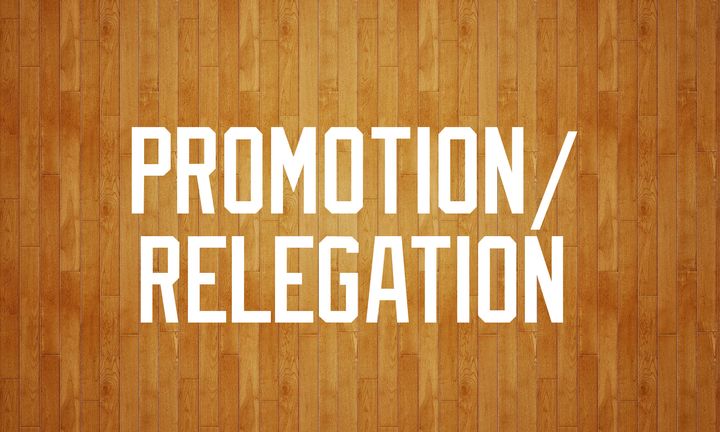

Comments ()